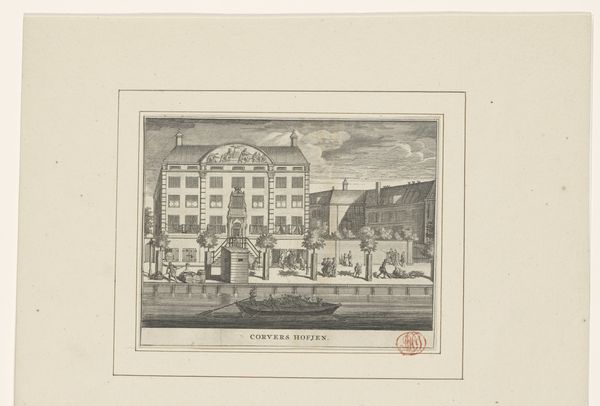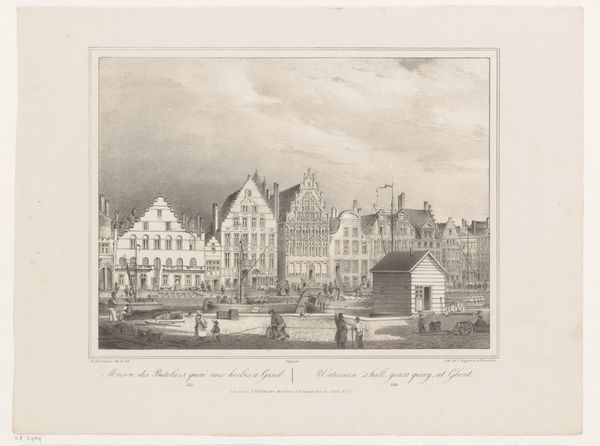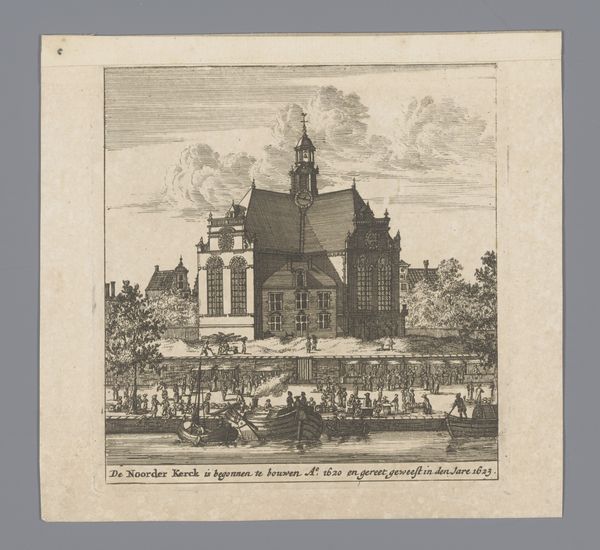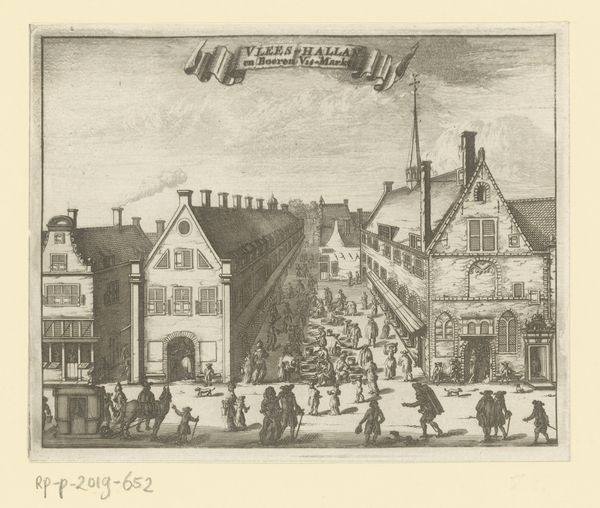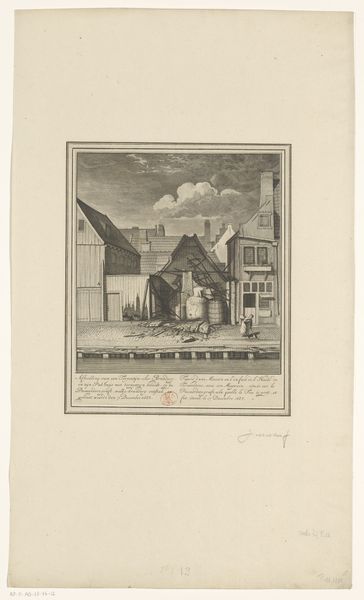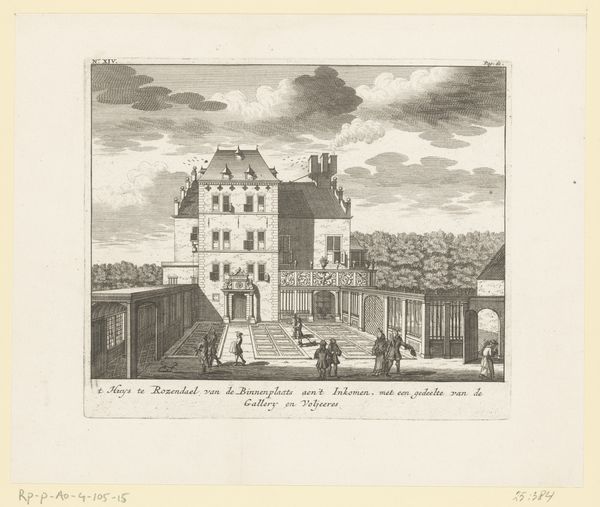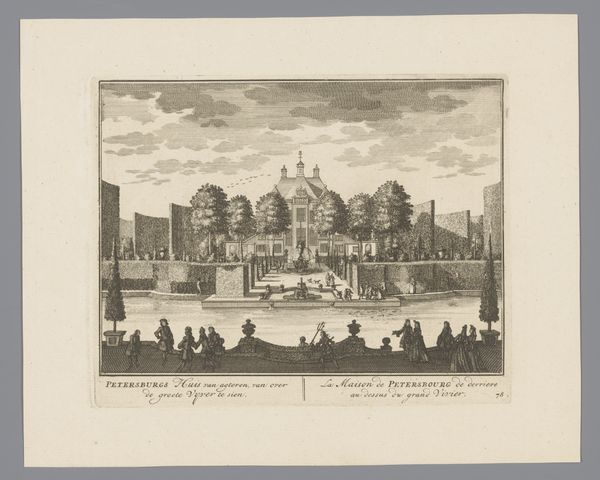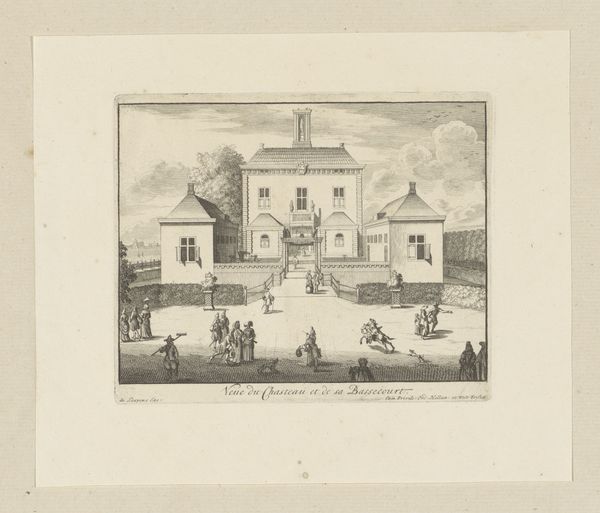
print, engraving, architecture
#
dutch-golden-age
# print
#
perspective
#
cityscape
#
engraving
#
architecture
Dimensions: height 150 mm, width 180 mm
Copyright: Rijks Museum: Open Domain
Editor: This is "View of the Coffin Makers' Shop on the Kalverstraat in Amsterdam" created around 1726, using engraving on paper. I'm struck by how this print captures a bustling Amsterdam street. How can we dive into its depths? Curator: It’s compelling to consider the conditions of production. An engraving such as this depended heavily on both artisanal skill and commercial impetus. Consider the labor involved: the engraver, the paper maker, the printer. Editor: What was the market for prints like this at the time? Curator: The Dutch Golden Age thrived on trade. Prints like this weren’t just art; they were commodities representing the material wealth and architectural pride of Amsterdam. Who consumed these images, and what role did they play in the city's self-image? The houses, with smoke billowing from the chimneys, highlight activity - indicating industry and craftsmanship within the city. It serves to portray Amsterdam as industrious. What do you make of that? Editor: That’s fascinating! So, it’s not just a pretty picture, it’s almost like...propaganda promoting economic vigor? Also, are those coffins actually on display? That certainly highlights a different aspect of labour! Curator: Precisely! Think of how materials are presented in this era and why; prints showcase craftsmanship, paper signifies information's accessibility, and coffins...a grim necessity. All readily commodified. Editor: It makes you think about what aspects of labor we choose to display or conceal today, and what materials communicate about a place. Thank you! Curator: A deeper connection to materials shifts our entire perception, doesn't it?
Comments
No comments
Be the first to comment and join the conversation on the ultimate creative platform.



